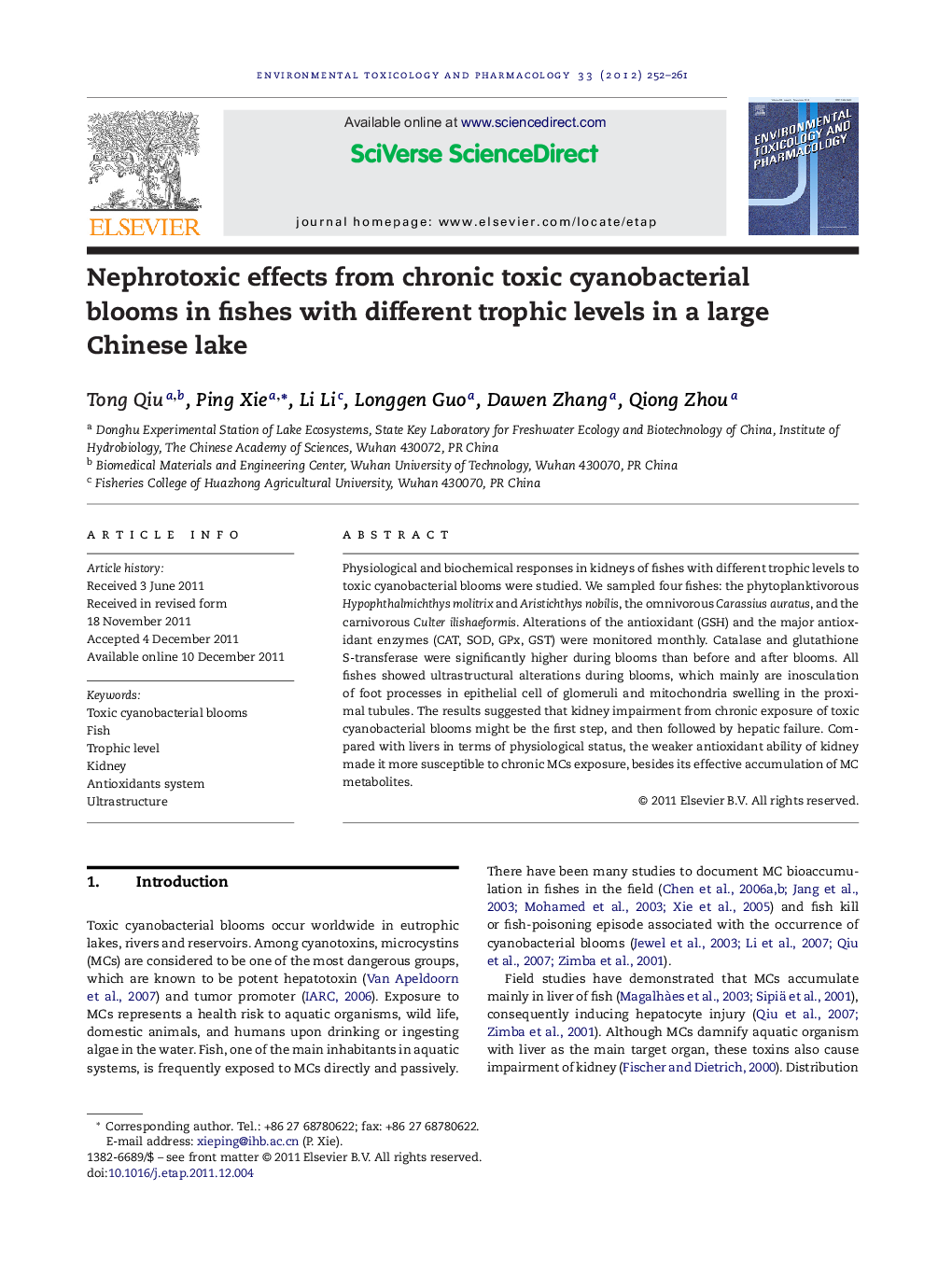| Article ID | Journal | Published Year | Pages | File Type |
|---|---|---|---|---|
| 2583513 | Environmental Toxicology and Pharmacology | 2012 | 10 Pages |
Physiological and biochemical responses in kidneys of fishes with different trophic levels to toxic cyanobacterial blooms were studied. We sampled four fishes: the phytoplanktivorous Hypophthalmichthys molitrix and Aristichthys nobilis, the omnivorous Carassius auratus, and the carnivorous Culter ilishaeformis. Alterations of the antioxidant (GSH) and the major antioxidant enzymes (CAT, SOD, GPx, GST) were monitored monthly. Catalase and glutathione S-transferase were significantly higher during blooms than before and after blooms. All fishes showed ultrastructural alterations during blooms, which mainly are inosculation of foot processes in epithelial cell of glomeruli and mitochondria swelling in the proximal tubules. The results suggested that kidney impairment from chronic exposure of toxic cyanobacterial blooms might be the first step, and then followed by hepatic failure. Compared with livers in terms of physiological status, the weaker antioxidant ability of kidney made it more susceptible to chronic MCs exposure, besides its effective accumulation of MC metabolites.
► MCs cause impairment of kidney. ► Kidney impairment from chronic exposure of toxic cyanobacterial blooms might be the first step of fish chronic toxicosis. ► Weaker antioxidant system in kidney of fishes make it more susceptible to MCs and their metabolites than liver.
